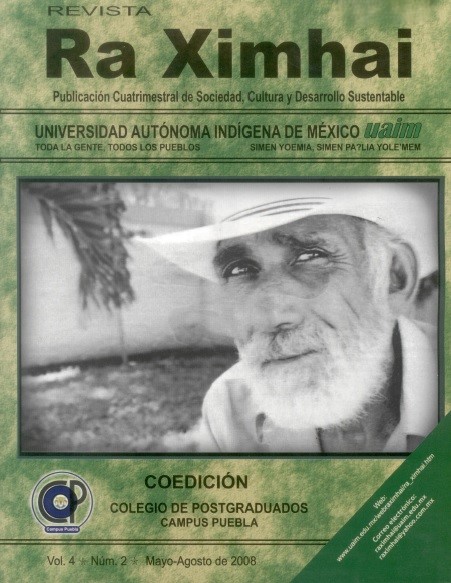Structure and composition of bird communities in natural areas of Pinus caribaea Morelet, of the EFI “minas de matahambre”
DOI:
https://doi.org/10.35197/rx.04.02.2008.11.fhKeywords:
bird communities, structure and composition, tropical pinus, natural areasAbstract
The research was carried out between January and April 2007, in a natural pine forest of Pinus tropicalis Morelet (female pine) of 192 ha located in Tibisí, which belongs to lot 15 of the Santa Lucía Silvicultural Unit of the “Minas de Matahambre” Integrated Forestry Company; with the objective of determining the structure and composition of the bird communities associated with natural areas of Pinus tropicalis. For the bird census, the method of counting points with a fixed radius proposed by Wunderle (1994) for counting birds in the Caribbean was used. A total of 37 bird species were detected, distributed in 11 Orders and 18 Families, which were classified according to their abundance and whether they remained within the national territory, the trophic group to which they belong, level of endemism and degree of threat. Ecological indices were determined for each of the strata. The relationship between vegetation parameters and the number of birds detected was determined, as well as the plant species most used by them.
Downloads
References
Acosta, M., M. E. Ibarra y E. Fernández. 1988. Aspectos ecológicos de la avifauna de Cayo Matías (Grupo insular de los Canarreos, Cuba). Poeyana, 360: 1-11.
–––––Check-list of North American Birds. (En línea). Disponible en http://www.aou.org/checklist/index.php3 . (Consultada el 12 de octubre del 2007).
González A, H; Llanes S, A; Sánchez O, B; Rodríguez B, D; Pérez M, E; Blanco R, P; Oviedo P, R y Pérez H, A 1999. Estado de las comunidades de aves residentes y migratorias en ecosistemas cubanos en relación con el impacto provocado por los cambios globales. Instituto de Ecología y Sistemática. Cuba.
Hernández, F. y J. Mandek. 1998. Estructura de las comunidades de las aves que habitan en un bosque de pinos (Pinus caribeae Morelet) de la EFI. “La Palma”. Revista Electrónica “AVANCE”, del CITMA, Provincia de Pinar de Río.
Hutto, R. L. 1985. Habitat selection by nombreeding, migratory land birds. In Habitat selection in birds (M.L.Cody, ed.). Academic Press, San Diego, p. 455-476.
James, F. C. y H. Shugart. 1970. A quantitative method of habitat description. Audubon Field Notes, 24: 727-736.
Kirkonnell, A. y Orlando Garrido. 2000. Field Guide of Cuban Birds. Cornel University Press, 253 pp.
Kirkonnell, A y Orlando Garrido 1992. Los Grupos tróficos en la Avifauna Cubana. Revista Poeyana. Instituto de Ecología y Sistemática. Academia de Ciencia de Cuba. pp. 1-13.
Llanes, A. Sosa; González, H.; Pérez, E. y Bárbara Sánchez. 2002. Lista de las Aves Registradas para Cuba; Aves de Cuba. Instituto de Ecología y Sistemática. ISBN 059-02-0349-3.
Magurran, A. E. 1988. Ecological diversity and its measurement. Cambridge, Great Britain, University Press. 179 pp.
Méndez, M. y Derriba J. 2002. Estudio de la conducta trófica de las aves: una vía para proteger su biodiversidad. (En línea). Disponible en http://www.monografias.com/trabajos12/impact/impact.shtml. Consultada el 15 Marzo 2007, 10:00 PM.
Merek, T. 2004. Estado actual de la avifauna asociada a ecosistemas de montaña de la EFI “La Palma” con fines de conservación. Tesis en opción al título académico de Master en Ciencias Forestales. Universidad de Pinar del Río, Cuba, 80 pp.
Mugica, L. y M. Acosta. 1989. Evolución dinámica de la comunidad de aves que habita la manigua costera del Jardín Botánico Nacional. Rev. Jard. Bot. Nac., 10 (1): 83- 94.
Noon, B. R. 1981. Techniques for sampling avian habitats. The use of multivariate statistics in studies of wildlife habitat, p.42-52. The use of multivariate statistic in studies of wildlife habitat. Capen. E., Ed. USDA Forest Serv. Tech. Rep. RM 9-87.
Pérez, H. A; Delgado F. F; Tamarit, L, A. 2003. Comunidades de aves de bosque semideciduo en la Reserva de la Biosfera “Península de Guanahacabibes”, Cuba. Crónica Forestal y del Medio Ambiente. p. 18:25-37.
Pielou, E. C. 1975. Population and community ecology. Principles and methods. New York: Gordon and Breach Science Publishers.
Toledo, R. 2004. Grado de atrofización y manejo forestal en relación con la diversidad y abundancia de las comunidades de aves en la Cuenca del Río Cuyaguateje.
Tesis en opción al título académico de Master en Ciencias Forestales. Universidad de Pinar del Río, Cuba.
Wolda, H. 1990. Food availability for an insectivore and how to measure it. In Avian foraging: Theory, methodology, and applications. (M. L. Morrison, ed). Studies in Avian Biology 13, p. 38-143.
Wunderle, Joseph M. Jr. 1994. Métodos para Contar Aves Terrestres del Caribe.
Folleto. pp. 1-5.
Downloads
Published
How to Cite
Issue
Section
License
Copyright (c) 2008 Fernando R. Hernández Martínez, Yatsunaris Alonso Torrens, Rogelio Sotolongo Sospedra

This work is licensed under a Creative Commons Attribution-NonCommercial 4.0 International License.
Usted es libre de:
- Compartir — copiar y redistribuir el material en cualquier medio o formato
- Adaptar — remezclar, transformar y construir a partir del material
- La licenciante no puede revocar estas libertades en tanto usted siga los términos de la licencia
Bajo los siguientes términos:
- Atribución — Usted debe dar crédito de manera adecuada , brindar un enlace a la licencia, e indicar si se han realizado cambios . Puede hacerlo en cualquier forma razonable, pero no de forma tal que sugiera que usted o su uso tienen el apoyo de la licenciante.
- NoComercial — Usted no puede hacer uso del material con propósitos comerciales .
- No hay restricciones adicionales — No puede aplicar términos legales ni medidas tecnológicas que restrinjan legalmente a otras a hacer cualquier uso permitido por la licencia.








